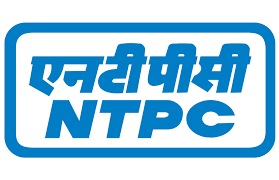Diversity is much more than employing more women; it is about changing the organization’s fabric
– By Dr. Akanksha Mago, Head Corporate Communications Core Diagnostics
The need for achieving greater gender parity in the corporate world has attracted much attention in recent years, with a lot of debate and discussion being conducted over the subject in the media as well as at industry forums. A widely-accepted fact is the pyramid-shaped progression flow of women in any organization. If you look at the lowest rung of executives in any company, you will find almost equal numbers of men and women employees. However, as you move up the corporate ladder, the number of women starts diminishing. Expectedly, it is the lowest at the top – in the boardrooms.
In recent years, a series of surveys and reports have highlighted the persistent gender skew against women in corporate organizations globally. According to the Fortune 500 list of 2016 women held an abysmal 4 per cent of the CEO positions in 500 of the world’s largest companies. Back home in India, this ratio is even more dismal, with only eight women leaders among the BSE 500 firms. The representation of women in Indian corporate boardrooms also remains below the global average of 14.7 per cent.
This disparity continues despite the growing awareness about the direct benefits – measured in terms of business metrics – of increasing the number of women in workforce, in management teams, and in the top-executive layer. It is well known that diversity of viewpoints that stems from gender diversity is a pre-requisite for innovation – a key determinant of long-term viability of a company. It is equally well understood that inclusion of women in higher rungs of management generates a more empathetic, congenial workplace – a key determinant for low attrition and talent continuity.
Corrective measures must be of consequence, and must be implemented urgently.
In 2015, the Securities and Exchange Board of India mandated all listed companies to have at least one woman director on their board to increase the number of women in top decision making roles. However, given the paucity of women in leadership roles, many companies fulfilled this requirement by installing women family members on to their boards. The SEBI’s directive, though in good faith, is a classic example of trying to find a solution upside down, when what is needed is a bottom up approach – that of retaining and supporting talented women employees with leadership abilities.
In India, a number of organizations are today making conscious efforts to reduce the gender gaps in their workforce. Yet, the widespread notion is that having more women in the organization automatically translates into gender inclusivity. However, increasing the representation of women is only the first step towards making an organization more equitable.
So, what does it take for an organization to actually become a gender inclusive workplace?
Representation at every level and sphere
An organization will truly be gender inclusive if women are part of its workforce at every level – from executives to managers; in every department – from IT to HR; as also in positions where they can make a difference to the organization’s policies. It has been observed that organizations that have women in the top rung tend to have more women friendly policies because they have a say in it. In most cases, a workforce where women are abundant at the lower executive levels but absent in the top management puts only piecemeal efforts towards gender inclusivity. Come to think of it, much like the society where men have for centuries been the decision makers, organizations that have been led and driven by men over years need the female perspective in policy to become more amenable to women. In a nutshell, organizations have to consciously change their fabric to become more inclusive.
A 2007 study by research organization Catalyst found that among the Fortune 500 companies those that had more female board directors achieved higher financial performance. So, having more inclusive boardrooms also has economic benefits.
Equal Pay for Equal Work
In recent years, several leading female actors, both in Hollywood and Bollywood have been drawing attention to the continuing pay disparity between male and female actors. This phenomenon is rampant across sectors and industries. Job search platform Monster.com conducted a study in India recently which threw startling facts – that women earned 27% lower median wages than men. Addressing this gap continues to be a major challenge for organizations who want to become truly gender inclusive.
A gender sensitive culture
With organizations usually molded to meet the work styles of men, women face several challenges in their quest to move up the corporate ladder. Lower levels of engagement by men, greater compatibility between male managers and executives, and the general absence of awareness and acknowledgement of these problems are major challenges. To become a gender inclusive workspace, an organization must not only have substantial women, but must also have a gender friendly environment, better gender relations as well as instituted norms to check sexual harassment.
Empathetic approach to women’s needs
Going the family way is often considered the end of a woman’s professional rise but is never considered a hurdle for men! In the absence of policies to allow them to balance their work and motherhood, most women either drop off the workforce or arrive at a compromise with their profiles, settling in for a plateauing career graph. An institutionalized bias and lack of support for women employees who decide to have children continues to be a major challenge to gender inclusivity across the world. It is essential to make organizational culture more amenable to women’s needs by instituting greater flexibility in policies and providing the right infrastructure where young mothers can nurture their babies without stress and at the same time be totally focused on their work.
Image Courtesy: linkabusiness.com








